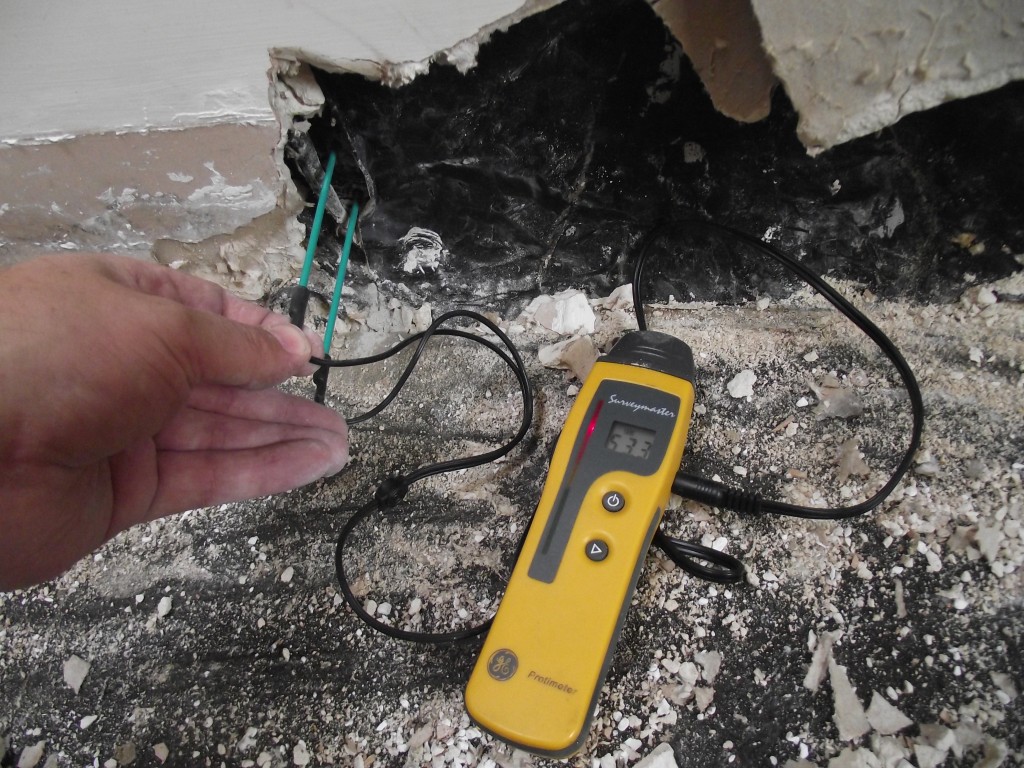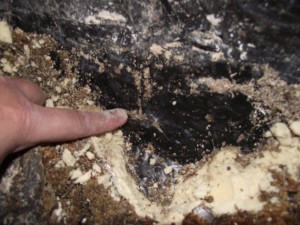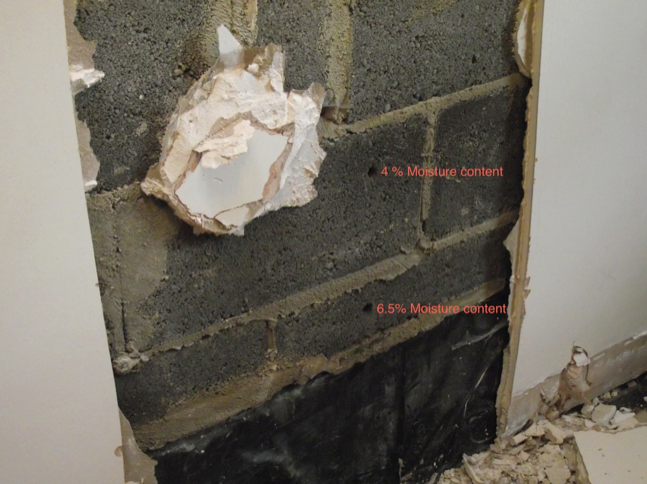Substantial Flooring Defects Encountered When Assessing Potential NHBC Claim
I recently carried out a substantial investigation into a relatively new build property in County Durham. The property was 6 years old and still covered by the NHBC Buildmark warranty. The property was suffering from major problems with damp and as always I warned the client of the need for invasive survey work.
I can’t cover all the defects found in a short blog but the flooring defects found are interesting because the construction methods used are rather odd.
Essentially the property was suffering quite seriously from wall base damp. The walls were dry lined on dot and dabs and in places the plasterboard was so damp it was crumbling. The client had an expensive hardwood floor down and this was ruined with damp staining and swelling of the timber.

The only way to fully understand what was going on was to take up flooring and expose the substrate. Skirting boards were removed and the hardwood flooring came up. We found the floor to be laid on a standard chipboard oversite and I’m sure you know what happens to chipboard when it gets wet, particularly when it is not bathroom grade. The chipboard was also taken up and we found that the solid floor was covered with Kingspan insulation slabs, these too were saturated and we removed a section of insulation to see what was under this. Incredibly, what we eventually found was that there appeared to no concrete floor screed installed. The SAM was supposed to be laid on a 75mm reinforced sand and cement screed but all we found was a compacted hardcore base covered with a thick layer of black Visqueen SAM (self adhesive membrane) acting as a DPM.
There were numerous serious faults with the installation of the Visqueen SAM even had it been laid correctly on a 75mm screed…
- The membrane had not been overlapped anywhere near the required 150mm and in fact had already failed at joints. One failure was apparent enough for us to be able to use deep wall probes through the gap in the membrane to check whether the underlying masonry was damp. See next image.

Deep wall probes indicate that the underlying wall is saturated The overlap on the membrane was around 10mm rather than the required 150mm.
On removing a large section of chipboard and Kingspan insulation from the floor we immediately noted that the Visqueen SAM was severely punctured due to underlying sharp objects. See image.

Badly punctured Visqueen SAM 3. The Visqueen SAM was not installed to manufacturers requirements nor did it meet the installation standards required to maintain its BBA accreditation.
4. The Visqueen was simply turned up the concrete block wall and was not connected to a physical damp proof course in the wall because there was no physical damp proof course installed in the wall. This resulted in severe saturation of the concrete wall base with 6.5% total moisture content recorded above the level of the SAM membrane. See image.

No DPC to party wall and saturated wall base The choice of Visqueen SAM as a physical DPM was utterly bizarre for what should have been a straight forward 1200 gauge DPM sheet installation but we can only assume that due to the thickness of the material the rogue builder thought he’d get away with not installing the floor screed. He was of course wrong and the SAM was badly punctured by the underlying aggregate in numerous locations. Defects in this property ran to a 28 page report excluding any appendix material and whilst I wish I was surprised to find work of this quality, sadly it is all too frequent.

Leave a Reply